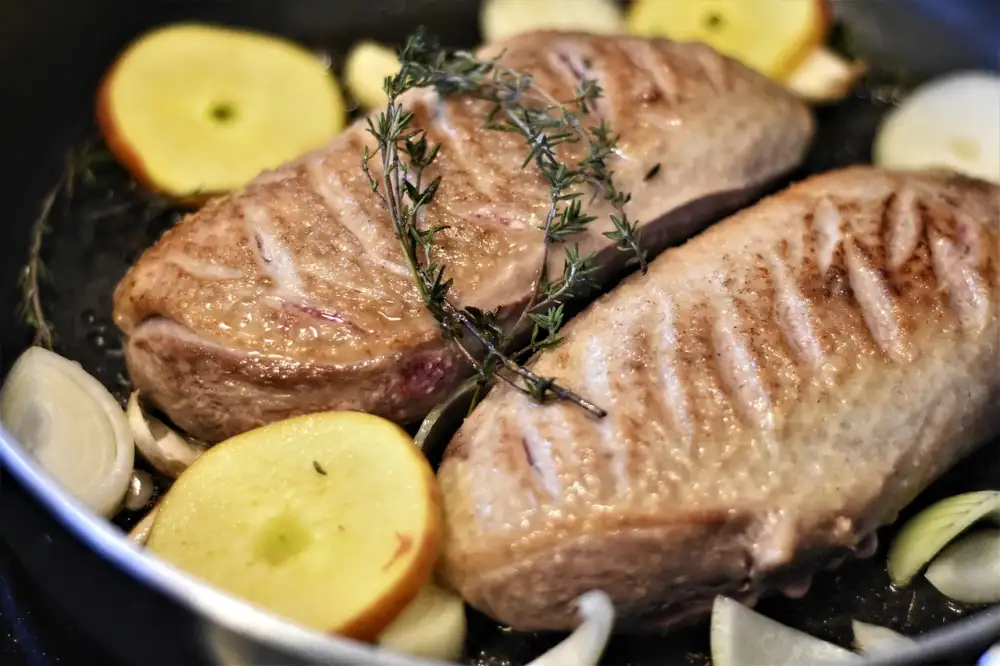Spice Up Your Kitchen with this Flavorful Curry Recipe

Curry is a beloved dish known for its rich and complex flavors. Originating from the Indian subcontinent, curry has become popular worldwide for its aromatic blend of spices and ingredients. The term "curry" actually refers to a variety of dishes that can be made with different meats, vegetables, or legumes, all simmered in a fragrant sauce. Each region has its own unique take on curry, resulting in a diverse range of flavors and heat levels. Whether you prefer a mild and creamy curry or a spicy and tangy one, there's a version out there to suit every palate.
Ingredients Required for Making Curry
To make a delicious curry, you will need the following key ingredients:
1. Protein: Choose from chicken, beef, lamb, shrimp, tofu, or chickpeas for a vegetarian option.
2. Vegetables: Common choices include onions, tomatoes, bell peppers, and potatoes.
3. Curry Paste or Powder: Use store-bought curry paste or powder for convenience or make your own blend of spices like turmeric, cumin, coriander, and chili powder.
4. Coconut Milk or Yogurt: To add creaminess and richness to your curry.
5. Aromatics: Garlic and ginger are essential for adding depth of flavor.
6. Oil: For sautéing the ingredients and enhancing the overall taste.
7. Fresh Herbs: Cilantro or parsley for garnishing at the end.
Ensure you have these ingredients on hand before starting your flavorful curry adventure!
Step-by-Step Cooking Instructions
1. Heat a tablespoon of oil in a large pan over medium heat.
2. Add finely chopped onions and sauté until golden brown.
3. Stir in minced garlic and ginger, cooking for another minute.
4. Mix in your choice of curry spices like turmeric, cumin, coriander, and garam masala.
5. Add diced tomatoes and cook until they soften.
6. Pour in coconut milk or broth to create the base of the curry.
7. Toss in your main protein such as chicken, tofu, or chickpeas.
8. Simmer on low heat for 20-30 minutes to allow flavors to meld.
9. Adjust seasoning with salt and pepper to taste before serving over rice or with naan bread.
Enjoy the aromatic and flavorful curry you've prepared with love!
Tips for Enhancing the Flavor of Your Curry
To enhance the flavor of your curry, consider toasting whole spices before grinding them for a more intense aroma. Additionally, sautéing onions until caramelized adds a rich sweetness to the dish. Experiment with adding a splash of coconut milk or yogurt towards the end of cooking for creaminess. Don't forget to season with salt and a squeeze of fresh lemon juice at the end to brighten the flavors. Lastly, garnish with fresh herbs like cilantro or mint for a burst of freshness in every bite.
Serving Suggestions and Pairings
When it comes to serving curry, there are various delicious options to consider. Pairing your flavorful curry with fragrant basmati rice is a classic choice that complements the dish perfectly. You can also serve it with warm naan bread or roti for a delightful combination of flavors and textures. For a lighter option, consider serving your curry with quinoa or cauliflower rice. Additionally, adding a side of cooling raita or tangy pickles can help balance out the spices in the dish. Don't forget to garnish your curry with fresh cilantro leaves or a squeeze of lemon juice for an extra burst of flavor!
Variations and Adaptations to Try
1. **Vegetarian Options**: For a meat-free version, you can substitute the protein with tofu, chickpeas, or mixed vegetables like bell peppers, zucchini, and carrots.
2. **Regional Flavors**: Experiment with different curry powders from various regions such as Thai red curry paste, Japanese curry roux, or Indian masala blends for unique taste profiles.
3. **Creamy Curries**: Add coconut milk or yogurt towards the end of cooking for a creamy texture and rich flavor.
4. **Spice Levels**: Adjust the amount of chili powder or fresh chilies to suit your spice tolerance level.
5. **Protein Choices**: Swap out the traditional chicken or beef for shrimp, lamb, or even paneer for a different twist on this classic dish.
6. **Herb Infusions**: Incorporate fresh herbs like cilantro, mint, or basil at the end of cooking for a burst of freshness and color.
7. **Customize Your Veggies**: Feel free to mix and match vegetables based on what's in season or your personal preferences to create a colorful and nutritious meal.
Health Benefits of Including Curry in Your Diet
Curry is not only a delicious and flavorful dish but also offers numerous health benefits. The combination of spices commonly found in curry, such as turmeric, cumin, coriander, and chili peppers, provide a variety of health-boosting properties. Turmeric, a key ingredient in curry powder, contains curcumin, known for its anti-inflammatory and antioxidant effects. These properties may help reduce inflammation in the body and lower the risk of chronic diseases like heart disease and cancer.
Cumin is rich in iron and may aid digestion by stimulating enzymes that break down food. Coriander is packed with vitamins and minerals like vitamin C, vitamin K, and potassium which support overall health. Chili peppers contain capsaicin, known for its metabolism-boosting properties and potential to aid weight loss.
Including curry in your diet can also help improve digestion due to the blend of spices that have been traditionally used to aid digestion in many cultures. Additionally, the antimicrobial properties of certain spices in curry may help fight off harmful bacteria in the gut.
Overall, incorporating curry into your meals can not only add a burst of flavor but also provide a range of health benefits that support overall well-being.
Published: 01. 05. 2024
Category: Recipes



